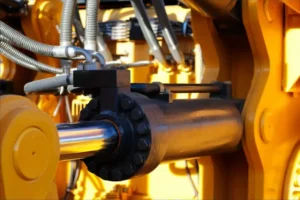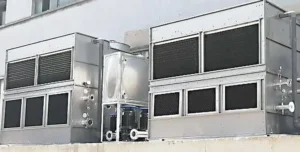The working principle of an Induction Copper Melting Furnace revolves around the use of electromagnetic induction to heat and melt copper.
1. ইনডাকশন কয়েল (Primary Coil)
The induction furnace contains a copper coil (also called the primary coil or induction coil), through which an alternating current (এসি) is passed. This coil is usually positioned around a crucible or furnace chamber that holds the copper material.
2. Electromagnetic Field Generation
When the AC flows through the induction coil, it creates a rapidly changing magnetic field around the coil. This magnetic field induces an electrical current (called an এডি কারেন্ট) in the copper charge placed inside the furnace.
3. Resistive Heating of Copper
The induced eddy currents in the copper experience resistive heating. As the copper’s resistance to these currents causes the material to heat up, the copper begins to melt. The process is highly efficient because the heat is generated directly within the material itself, rather than from an external heat source like in traditional furnaces.
4. Power Control
The power supplied to the induction coil is controlled by a high-frequency generator or power supply. The frequency of the AC current and the power level can be adjusted to control the temperature and rate at which the copper melts. Higher frequencies are generally used to melt copper, as they create a more concentrated heating effect in the copper material.
5. Heat Transfer
The melting of copper occurs very quickly due to the direct heating mechanism, resulting in minimal heat losses compared to conventional furnaces. The temperature inside the furnace can reach over 1,100°C (2,012°ফা), which is necessary for copper to melt (melting point: 1,083°C or 1,981°F).
6. Crucible and Furnace Design
The copper is usually placed in a crucible, which is often made from a material like graphite or a সিরামিক that can withstand high temperatures. The crucible is placed inside a furnace chamber with the induction coil surrounding it.
7. গলনা প্রক্রিয়া
As the eddy currents rapidly heat the copper, the metal melts uniformly. The melted copper can then be poured into molds or cast into different shapes for further processing.
8. Energy Efficiency and Control
আনয়ন চুল্লি are highly efficient, with low thermal losses and precise temperature control. The melting process can be monitored in real-time, ensuring minimal oxidation or contamination of the copper, which is particularly important in industries where the purity of copper is critical.
Advantages of Induction Copper Melting Furnaces:
- Energy efficient: Direct heating reduces energy consumption.
- Faster melting times: Copper melts more quickly compared to traditional methods.
- Precise control: Exact temperature control leads to better quality.
- Clean process: Reduced oxidation and contamination compared to other melting methods.

Induction melting furnaces are especially popular in industries that require high purity and efficient melting of copper, such as in the production of copper alloys, wires, and electrical components.







